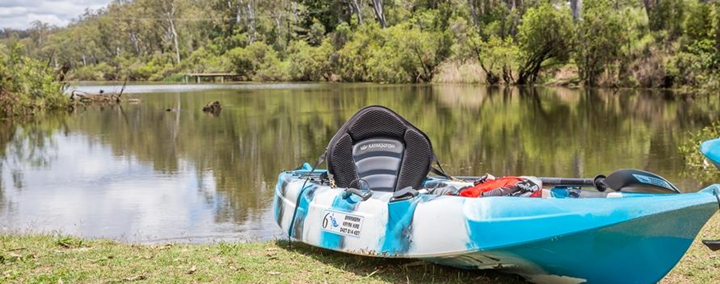Burnett River and Tributaries Catchment Flood Study

Introduction
The Burnett River is located in the Wide Bay – Burnett region and has a catchment area of about 33,000 square kilometres that spans across six different local government areas. Major flooding in the Burnett River is relatively infrequent, however, under certain meteorological conditions, heavy rainfalls can result in significant floods.
The Queensland Government via the Queensland Reconstruction Authority (QRA) is funding a catchment wide flood study of the Burnett River and its major tributaries - the Burnett River and Tributaries Catchment Flood Study (the Flood Study).
The Burnett Catchment Council’s Working Group (comprising Bundaberg Regional, North Burnett Regional, South Burnett Regional, Cherbourg Aboriginal Shire, and Gympie Regional Councils) has been established and the group is working together with AECOM Australia Pty Ltd, who have been engaged to deliver the Flood Study.
The Flood Study
The purpose of the Flood Study is to provide all Councils with a better understanding of flood behaviour throughout the Burnett River catchment which, in the future, can be used to improve flood management and response and provide up-to-date information for land-use and infrastructure planning.
Support
If you have been flooded before, and are still experiencing emotional stress and need support, contact:
- Phone Lifeline’s crisis hotline on 13 11 14
- Phone Beyond Blue 1300 22 4636
- Phone Community Recovery Hotline on 1800 173 349
- If you are Aboriginal or Torres Strait Islander person call 13 YARN
Housing assistance may also be available to residents affected by disaster events.

Note: Timelines are indicative only and are subject to change
Phase 1 – Data Collection: We asked the community to share their experiences with floods. We received photos, videos, and heard personal stories about flooding experiences. Thank you to everyone who contributed – your help is very important for this Flood Study.
Phase 2 – Model Development: Using the data collected from Phase 1, we’ve created new flood models of the Boyne and Stuart Rivers, and Barambah and Barker Creeks. Now, we need to make sure that the models can predict floods accurately. We do this by comparing the model’s predictions with what actually happened in past flood events. From the models, we’ve prepared flood maps which show past floods in these tributaries, like the one in January 2013. To confirm these flood maps accurately represent what happened, we need your help!
Do the flood maps match what happened? Help us get it right!
Phase 3 – Finalisation: Once we’ve completed Phase 2, we will move on to design event modelling. This involves modelling a variety of potential flood scenarios (including floods larger than the historical record) to see how they might affect our region. This modelling will enhance our understanding of flood risks, improve our flood management and land-use planning, and can be used in the future for:
- Identifying flood prone areas to help us prepare for, respond to, and recover from future floods
- Creating flood mapping for Planning Schemes to help guide safe development
- Developing flood risk management plans to help protect communities from future floods
How to provide your feedback?
There are multiple ways that you can explore the flood maps of past Burnett River floods and provide feedback:
- Online
Scan the QR code or head to our dedicated Burnett River and Tributaries Catchment Flood Study webpage here.
On the webpage, select the button to provide your feedback.
You will be able to make submissions from Monday, 21 April 2025 until Friday, 16 May 2025 at 5:00 PM (Brisbane time).
- Open Community Consultation Session
If you would like to talk to the project team and provide your feedback in person, we encourage you to attend our Open Community Consultation Session.
Where: Murgon Town Hall, Corner Lamb & Gore Streets, Murgon Qld 4605
When: Wednesday, 30 April 2025, 8:30 AM to 12:30 PM

The Burnett River flood study is jointly funded by the Australian and Queensland Governments under the Disaster Recovery Funding Arrangements’ Flood Risk Management Program


